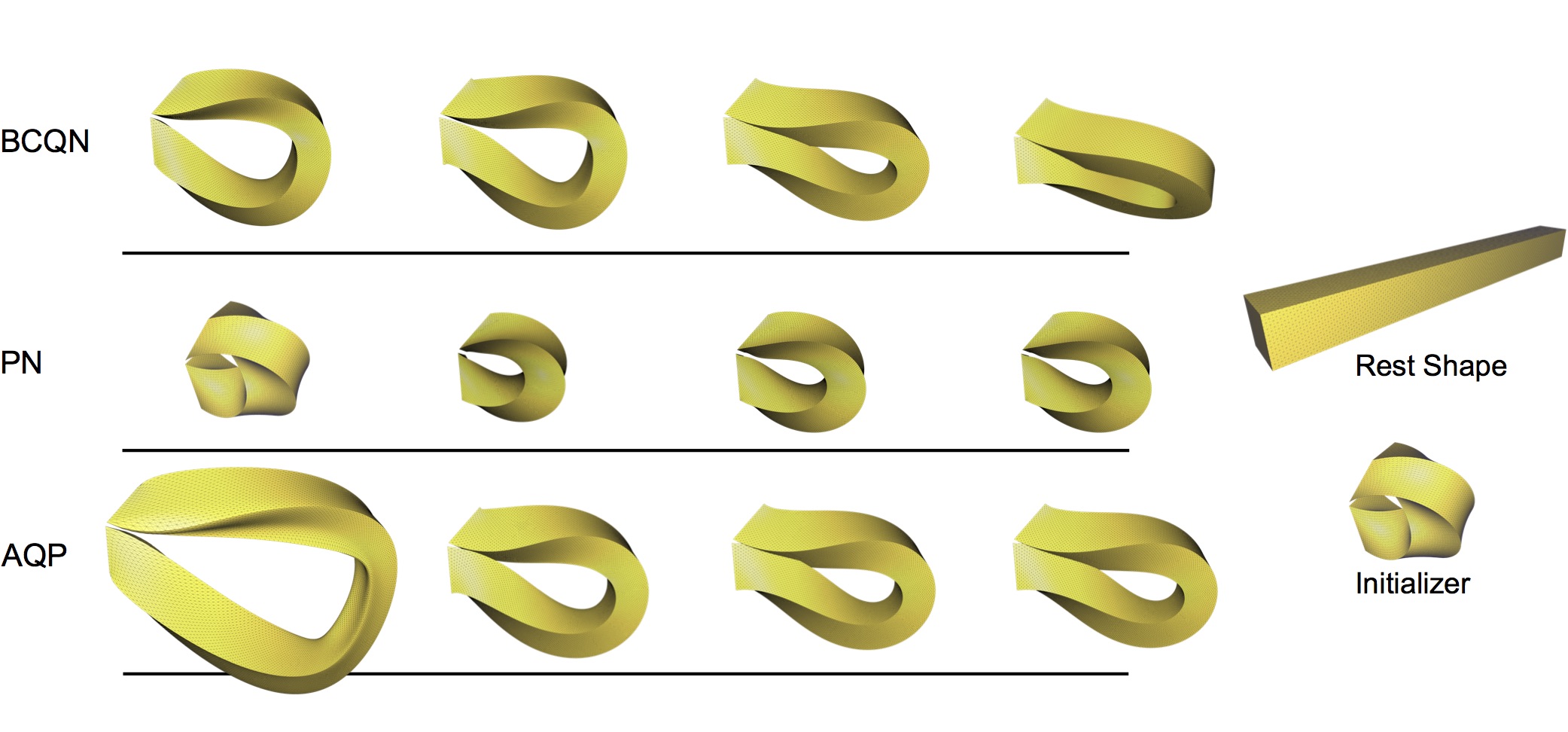Blended Cured Quasi-Newton for Distortion Optimization
1Adobe Research 2University of British Columbia 3Autodesk

Abstract
Optimizing distortion energies over a mesh, in two or three dimensions, is a common and critical problem in physical simulation and geometry processing. We present three new improvements to the state of the art: a barrier-aware line-search filter that cures blocked descent steps due to element barrier terms and so enables rapid progress; an energy proxy model that adaptively blends the Sobolev (inverse-Laplacian-processed) gradient and L-BFGS descent to gain the advantages of both, while avoiding L-BFGS's current limitations in distortion optimization tasks; and a characteristic gradient norm providing a robust and largely mesh- and energy-independent convergence criterion that avoids wrongful termination when algorithms temporarily slow their progress. Together these improvements form the basis for Blended Cured Quasi-Newton (BCQN), a new distortion optimization algorithm. Over a wide range of problems over all scales we show that BCQN is generally the fastest and most robust method available, making some previously intractable problems practical while offering up to an order of magnitude improvement in others.
Code
- GitHub
- [link]
BibTeX
@article{bcqn18,
author = "Yufeng Zhu and Robert Bridson and Danny M. Kaufman",
title = "Blended Cured Quasi-Newton for Distortion Optimization",
journal = {ACM Trans. on Graphics (SIGGRAPH 2018)},
year = 2018
}
Funding
This work was supported in part by the NSERC of Canada.